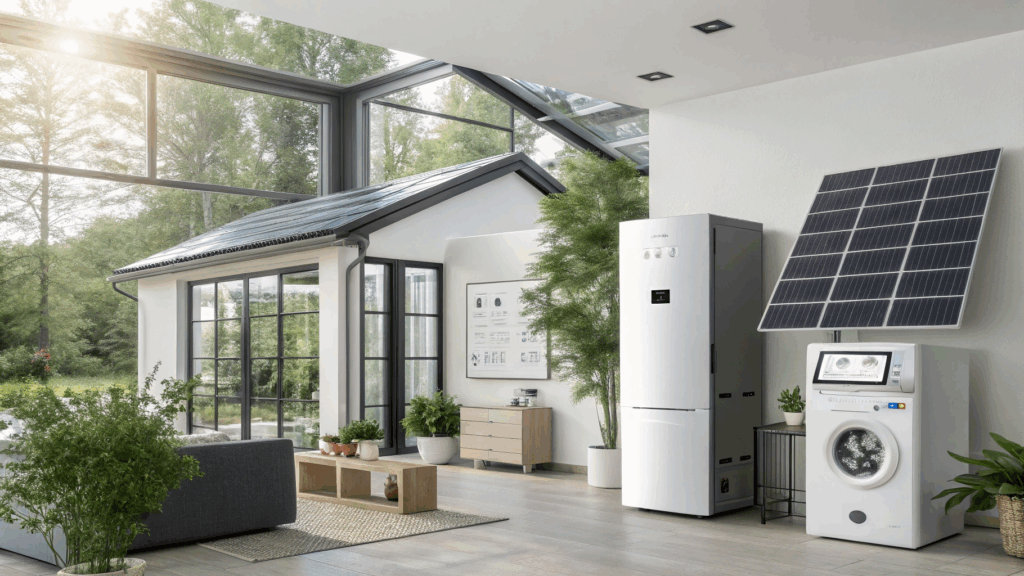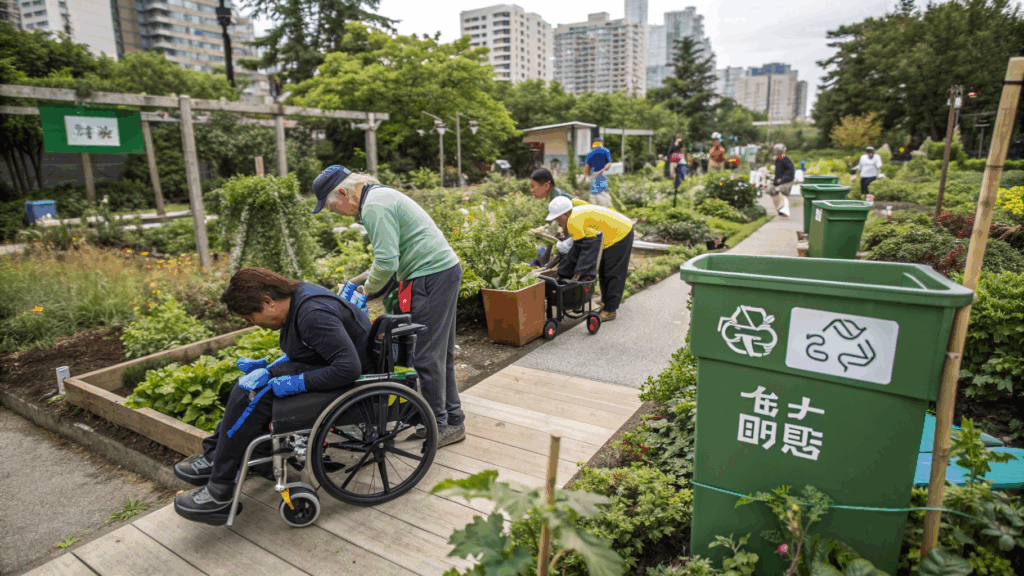Home, Smart Home: Tech That Transforms Daily Rituals Sustainably
In the evolving landscape of modern living, homes are becoming smarter—and greener. What was once the realm of science fiction has become a reality, where lights switch off automatically when you leave a room, thermostats adjust to your preferences, and appliances talk to each other to conserve energy. But beyond convenience and novelty, this transformation holds a deeper, more urgent promise: sustainability.
As climate change, resource depletion, and environmental degradation continue to shape global challenges, households everywhere are being called to rethink how they live. At the intersection of this need and innovation stands the smart home—a hub where everyday rituals are no longer just routines, but eco-conscious acts enabled by technology. In this article, we explore how smart home technology reshapes our daily lives, turning familiar tasks into impactful, sustainable habits—without sacrificing comfort or convenience.

1. The Smart Home as a Sustainability Partner
A smart home is typically equipped with a network of devices connected through Wi-Fi or Bluetooth, offering automation, remote control, and data-driven optimization. While these features originally gained popularity for offering convenience and luxury, they have now emerged as powerful allies in sustainability efforts.
Key functions of smart homes that support sustainable living:
- Energy efficiency through smart thermostats and lighting
- Water conservation via smart irrigation and leak detection
- Waste reduction with inventory and usage monitoring
- Renewable integration through solar and battery tech
- Behavioral insights using real-time data to shape habits
Together, these systems help homeowners reduce their carbon footprint, conserve resources, and lower costs—without adding complexity to daily life.
2. Morning Rituals: Waking Up in a Green Environment
a. Smart Thermostats and Circadian Lighting
Mornings often begin with the thermostat kicking in and lights flicking on. In a smart home, this process is automated and optimized.
Smart thermostats like Google Nest or Ecobee adjust temperature based on your sleep patterns, the weather outside, and occupancy sensors. Instead of blasting heat the moment you wake up, they gradually warm the space, consuming less energy.
Likewise, smart lighting systems like Philips Hue can simulate natural sunrise, gently waking you up with increasing light intensity. Not only does this support healthier sleep cycles, but it also reduces dependency on harsh, energy-draining bulbs.
b. Sustainable Morning Routines
Even grooming and hygiene can be optimized:
- Smart showerheads track water flow, temperature, and time, nudging you to save water.
- Smart mirrors with energy-efficient LEDs offer fog-free visibility and skin/hair analysis, reducing excessive product use.
- Connected coffee makers schedule brews to minimize idle energy consumption.
Through subtle adjustments, morning routines become rituals of resource mindfulness.
3. Mealtime Made Smarter—and Greener
The kitchen is a hotspot for both energy and food waste. Smart tech helps make mealtimes more efficient and sustainable.
a. Smart Refrigerators and Food Tracking
Smart fridges from brands like Samsung, LG, and Bosch include internal cameras, expiration tracking, and app integrations. These features:
- Reduce food waste by reminding you of what’s inside
- Suggest recipes using soon-to-expire ingredients
- Send shopping lists to your phone to avoid unnecessary purchases
By preventing spoilage and curbing overbuying, smart refrigerators support a more circular approach to consumption.
b. Eco-Friendly Cooking and Appliances
Smart ovens and cooktops use precise temperature control and cooking sensors to prevent energy waste. Dishwashers and washing machines adjust cycles based on load size and soil levels, using minimal water and detergent.
Even smart compost bins like Lomi or Reencle make food scrap recycling simple, breaking down organic waste into nutrient-rich soil in a matter of hours.
These systems turn cooking and cleaning into acts of sustainability, guided by data and automation.
4. Daily Energy Management: Efficiency Without Effort
One of the core pillars of a sustainable home is energy conservation. Smart home systems ensure energy use is optimized in real time.
a. Smart Plugs and Energy Monitoring
Smart plugs (e.g., from TP-Link, Wemo, or Amazon) allow users to:
- Schedule appliances to run during off-peak hours
- Remotely power down unused electronics
- Monitor device-level energy consumption
When paired with energy monitoring systems like Sense or Emporia, homeowners can receive granular data on which appliances are consuming the most energy—and how to adjust usage patterns.
b. Adaptive Lighting
Lighting automation contributes significantly to energy savings:
- Motion sensors turn lights off in empty rooms.
- Daylight sensors adjust indoor lighting based on the natural light available.
- Voice commands via assistants like Alexa or Google Home reduce unnecessary usage.
These small adjustments, when repeated daily, translate into major energy and cost savings over time.

5. Smart Workspaces: Greener Remote Living
With more people working from home, energy usage during daylight hours has increased. Smart homes help manage this demand while maintaining productivity.
a. Smart Desks and Monitors
Standing desks with smart memory presets and energy-efficient monitors allow users to customize their setups for comfort and efficiency. Monitors automatically dim or power down after periods of inactivity.
b. Power Scheduling and Load Balancing
Set your home office devices to shut off after work hours or when you leave the room. Even better, smart power strips can detect standby power and cut it, preventing phantom energy use from idle electronics.
Smart homes ensure that productivity doesn’t come at the planet’s expense.
6. Cleaning Routines: Low Impact, High Efficiency
Maintaining cleanliness is essential, but it often comes with high water and chemical use. Smart tech brings precision to these tasks.
a. Robotic Vacuums and Mops
Devices like iRobot Roomba or Roborock now map rooms to clean more efficiently, avoiding unnecessary repetitions. Many use HEPA filters to improve air quality and can schedule cleanings during solar peak times when renewable energy is abundant.
b. Eco-Conscious Laundry
Smart washers and dryers detect fabric type, load size, and soil level to use only as much water and heat as needed. They also connect to energy management apps to run cycles when cleaner energy is available from the grid.
These enhancements let you maintain a tidy home while consuming less.
7. Evening Wind-Down: Automating Rest and Restoration
Nighttime rituals provide an opportunity to recharge—and so can your home.
a. Circadian-Aware Lighting
Smart lighting systems adjust color temperature to match your circadian rhythm, promoting better sleep. Warm, low-intensity light in the evening reduces blue light exposure, helping the body naturally wind down.
b. Smart Blinds and Curtains
Automated window coverings close at sunset or during peak heat to conserve warmth in winter or keep rooms cool in summer. These help regulate indoor temperatures and reduce reliance on HVAC systems.
c. Bedtime Energy Savings
Smart home hubs can initiate “Goodnight” scenes:
- Powering down electronics
- Turning off lights
- Lowering the thermostat slightly
- Locking doors and activating security systems
This ensures your home saves energy while you rest.
8. Outdoor Integration: Green Beyond the Walls
Sustainable living isn’t confined to indoor spaces. Smart outdoor tech makes yards and gardens part of the eco-conscious experience.
a. Smart Irrigation
Devices like Rachio, RainMachine, or Hydrawise use weather data and soil moisture sensors to water only when necessary. This can save up to 50% of typical water use compared to traditional systems.
b. Solar Lighting and Energy
Solar-powered garden lights, motion detectors, and outdoor cameras operate without drawing electricity from the grid. Combine them with solar panels and battery storage, and your home becomes part of a microgrid, maximizing local energy use.
Smart outdoor systems align the rhythms of nature with sustainable technology.
9. Data-Driven Sustainability: Turning Insight into Action
One of the most powerful aspects of smart home tech is data transparency.
a. Environmental Dashboards
Apps and hubs (e.g., Home Assistant, Samsung SmartThings) display real-time information:
- Energy and water use
- Indoor air quality
- Carbon savings from solar use or avoided emissions
This data enables goal setting, such as reducing energy use by 10% or conserving 100 gallons of water per month.
b. Gamifying Green Habits
Some platforms like JouleBug or AWorld gamify sustainability by rewarding users for energy savings, proper recycling, or water conservation. These incentives transform routines into engaging challenges, driving long-term habit change.
10. Inclusive and Accessible Sustainability
Sustainable smart homes are not just for the tech-savvy. Many devices are designed to be voice-controlled, app-free, or highly intuitive, making them accessible for:
- Seniors and people with disabilities
- Families with children
- Renters and small home owners
Additionally, smart systems provide cost savings that make them economically beneficial over time. Government rebates and utility incentives further lower barriers to adoption.

11. Challenges and the Road Ahead
Despite their promise, smart homes are not without challenges:
- Initial cost can be high, though prices are falling.
- Data privacy and cybersecurity must be handled responsibly.
- **Device

